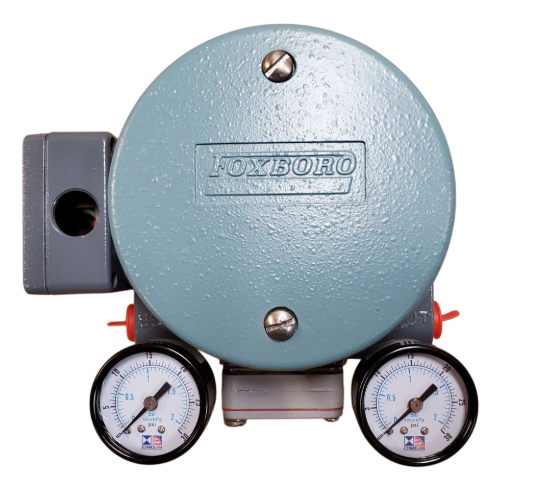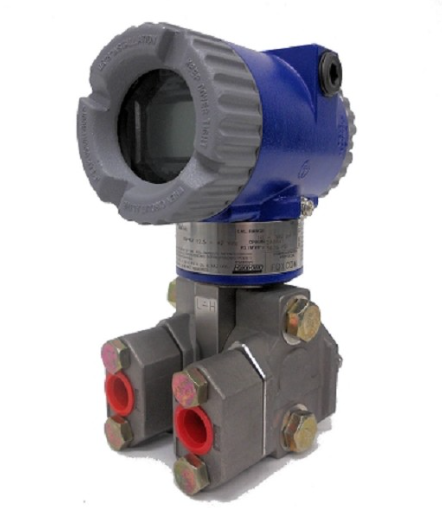Global geothermal is "hot" green future will come
Global attention to the development and utilization of geothermal energy is increasing
● Rozzo County
Studies have shown that nearly 50% of the share of energy consumption is related to the construction industry, the production and transportation of various building materials, the construction and operation of buildings are energy consumers. Among them, the energy consumption of the building operation link accounts for about 20% of the total energy consumption, the specific link includes heating and cooling, building lighting, internal cooking, etc., and heating and cooling energy consumption accounts for the majority. Whether it is a commercial building or a residential building, the heating and cooling condition is an important sign to evaluate the running quality of the building, and the energy consumption generated by it has typical characteristics of rigid demand. From the development trend, economic development and the improvement of people's living standards will further expand the scale of building operation energy. Once energy consumption rises to a certain level, it is almost impossible to bring it down, because consumption is irreversible. At the same time, driven by the global goal of "carbon neutrality", energy conservation and emission reduction have become the preferred targets of energy management policies in various countries. Under the dual constraints of low carbon energy saving and increasing energy consumption, it is an inevitable path for buildings to choose renewable energy for heating and cooling. In this situation, geothermal, as a rising star of the renewable energy family, is becoming an important choice for building energy.
The energy shortage caused by geopolitical conflicts has strengthened the determination of Europe and the United States to develop green and low-carbon energy
The "Geothermal Vision: Harnessing the Heat Beneath Our Feet" industry plan released by the U.S. Department of Energy's Geothermal Technology Office believes that geothermal resources throughout the United States can be widely used for heating and power generation, helping to increase the diversity of U.S. energy and further improve energy security. The US Department of Energy estimates that by 2050, by effectively improving the development level of geothermal technology, the scale of shallow geothermal use in the United States is expected to expand from 2 million to 28 million households, accounting for 23% of the US residential air conditioning market in 2050. The U.S. Department of Energy has proposed five key technology areas and key process plans, including resource assessment, subsurface signal detection, geothermal drilling and wellbore, geothermal resource recovery, and monitoring, modeling, and management of geothermal resources and facilities. After the introduction of US President Joe Biden's New Deal, the development of new energy, including geothermal, has accelerated significantly.

In recent years, the European Deep Geothermal Technology and Innovation Platform has released the deep geothermal strategic research and innovation agenda, proposed the Deep geothermal Energy Implementation Roadmap, clarified the tasks, objectives and work content of the European Union's geothermal development before 2030, and the realization of the European Union's deep geothermal development vision by 2050. The "Advance Plan" for the development of high-performance, low-cost and sustainable deep geothermal technologies is expected to meet 50% of Europe's projected electricity demand and 80% of its heat demand by 2050.
In view of the current low energy utilization efficiency of buildings and the limited distribution of deep geothermal resources, the European Union's geothermal development priority is to fund relevant projects to develop shallow geothermal systems with special potential, and to promote them on a large scale after their success. The European Union is currently carrying out the shallow geothermal development and utilization project GEOCOND, led by the Technical University of Valencia in Spain, and the joint participation of scientific research institutions in Turkey, Israel and other countries is a typical example. Supported by seven countries funded by the European Union, the main objective of the GEOCOND project is to reduce the cost of using geothermal energy. According to the public information, the progress of the project has basically reached the expected goal.
At present, 75% of the EU's building stock has the potential to improve energy efficiency, and the potential for building energy conservation is huge. The improvement of building energy operation efficiency is of great significance to the green decarbonization of the EU economy and the response to global warming. Geothermal power projects are currently being built in the UK to accelerate the decarbonisation transition and supply energy to communities, with 360 geothermal plants expected to be built by 2050, generating 15,000 gigawatt hours of electricity per year. The French Bureau of Geology and Minerals estimates that geothermal energy could meet 70 percent of France's heating needs in the future, up from just 1 percent today.
The energy shortage caused by geopolitical conflicts has further strengthened the determination of Europe and the United States to develop green and low-carbon energy. On the one hand, Europe and the United States attach importance to the clean supply of fossil energy, and on the other hand, promote the development of new energy. In view of the large scale of building heating and cooling energy consumption and the high proportion of energy consumption, energy substitution has become an important policy re-optimization entry point, and the status of geothermal energy has been upgraded again, and the development speed has been accelerated. The important reasons for the importance of geothermal energy are the stability of supply and widespread distribution. Although solar, wind and ocean energy are also clean renewable energy sources with unlimited supply, they are limited by factors such as seasonal changes and are not available anytime and anywhere. In contrast, geothermal energy, especially shallow geothermal energy, is widely available around the world, is not affected by seasonal changes and climatic conditions, and can be used locally to heat and cool buildings. The geothermal energy that people usually ignore is actually a clean renewable energy that can be used almost indefinitely around, and its potential is being gradually tapped out.
"Both safe and low-carbon" has become the basic principle followed by the transformation and development of China's energy industry
The global geothermal energy market is expected to reach $9.4 billion by 2027, with a compound annual growth rate of 5.9%. Under this trend, the practice of developing geothermal energy in Europe and America has certain reference significance for our country.
China is a big energy consumer, and coal accounts for about 57% of energy consumption, far higher than the world average. At the same time, China is a big country of direct utilization of geothermal energy, but the utilization of geothermal energy accounts for a relatively low proportion of total energy consumption, which does not match its resource potential. China has put forward the goal of reaching the peak of carbon before 2030 and achieving carbon neutrality before 2060, which determines that "safe and low-carbon" has become the basic principle followed by the transformation and development of China's energy industry.
In the important period when China has completed the building of a moderately prosperous society in all respects and is moving towards the second centenary goal, improving people's living standards and optimizing the industrial structure are important symbols of high-quality development. With the continuous improvement of China's urbanization level and the steady advancement of new rural construction, allowing urban and rural buildings to rely on renewable energy to achieve heating and cooling is an important measure to help high-quality development. According to the Ministry of Natural Resources data, the national ground source heat pump heating and cooling area from 2010 100 million square meters of rapid growth to 2020 800 million square meters, the average annual compound growth rate of 20%, to the end of the "fourteen five" will increase to 900 million square meters, geothermal development has a good basis for development, including China Petrochemical, including a number of enterprises are engaged in geothermal heating business.

From the perspective of the development trend, the future heating and cooling is not only needed in the northern region, but also in the southern region, especially due to historical reasons, some hot summer and cold winter areas have not been able to achieve central heating in the past, resulting in extreme cold weather when people's lives are widely affected. Nowadays, with the improvement of the level of economic development, the call for winter central heating in hot summer and cold winter areas is increasing. If you rely on fossil energy to ensure winter heating, it is bound to increase the overall energy supply and carbon emission reduction pressure, which does not match the "dual carbon" direction and basic requirements of regional economic development. The development of renewable energy is an ideal and realistic choice to enable hot summer and cold winter areas to achieve heating and cooling without increasing energy supply pressure and environmental pressure. Therefore, the promotion of geothermal energy heating and cooling is of great significance in giving play to the advantages of adequate supply and wide distribution of geothermal energy.
China's geothermal industry has entered a flourishing period
● Wang Di Rozo County
Tight gas supplies in Europe due to geopolitical conflicts are driving demand for geothermal energy. In terms of geothermal power generation, there are currently 142 geothermal power plants in operation in Europe with a total installed capacity of 3.5 GW. More than 30 geothermal power Wells are expected to be drilled in Europe in the next five years. In terms of geothermal heating, the shortage of natural gas in 2022 has pushed the demand for ground source heat pump markets in Europe to a record high, with more than 141,300 ground source heat pump systems installed, and it is expected that by 2030, the installed amount of ground source heat pump in Europe will be 30 million units, which can replace 35 billion cubic meters of natural gas.
As a major global energy consumer, China has similar considerations to Europe in promoting the development of the geothermal industry. On the one hand, we hope to reduce the import of fossil energy through the development of geothermal industry, and on the other hand, we hope to use the green and low-carbon characteristics of geothermal to achieve the "double carbon" goal. In 2023, the National Energy Administration issued 12 standards related to geothermal, which will further regulate the geothermal industry. In August, the National Development and Reform Commission and ten departments issued the "Green low-carbon Advanced Technology Demonstration Project Implementation Plan", proposing that the future shallow/deep geothermal energy heating and cooling and large capacity efficient geothermal energy and dry hot rock power generation is the key direction of demonstration project construction. The development of geothermal energy in various provinces is also accelerating, and Hebei Province has issued the "Regulations on the Promotion of New Energy Development in Hebei Province (Draft)" to support multiple uses such as clean heating. In the future, the development and utilization of geothermal energy in China will show a trend of shallow + medium and deep development.
The geothermal industry has greater potential and space for development
The development strategy and route of geothermal industry need to be further clarified. Geothermal energy has high stability, continuous supply efficiency is 4 times that of wind energy and 5 times that of solar energy, and it is a major strategic choice for China to build a new power system, improve people's quality of life, and achieve clean heating and cooling. At present, most of the geothermal policies that have been introduced in China are guiding, and the project construction is mainly based on decentralized residential building heating and cooling, without forming a stepped and large-scale sustainable development route planning, and it is still necessary to further improve the level of industrialization.

Geothermal resource exploration and development data need to be further strengthened. The development of high quality geothermal industry requires more accurate resource exploration. China has the potential of geothermal resources development, but the current investment in geothermal resources exploration and evaluation can not meet the needs of the rapid development of geothermal industry. According to the data of the National Geological Survey Bulletin (2021), the investment in geothermal exploration in China in 2021 is 525 million yuan, accounting for only 3% of the non-oil and gas investment, which is reduced by 18% compared with 2020, and only key investments are made in a few areas in the Beijing-Tianjin-Hebei region and the dry hot rock projects in the Gonghe Basin. Due to the lack of resource evaluation, geothermal development enterprises can only rely on incomplete geothermal data, or learn from oil and gas exploration data, and sometimes have to invest in resource exploration evaluation in key areas, which aggravates the exploration risk and increases the development cost.
The economics of geothermal projects require further policy support. The power generation cost of Xizang Yangyi Power Station is about 3 yuan/KWH, while the on-grid electricity price is only 0.25 yuan/KWH, and it has not applied for any electricity price support policy, and it is in a state of cost inversion for a long time. In addition, the new version of China's Resource Tax Law lists geothermal as an energy mineral, and imposes "geothermal mineral resource tax" and "water resources fee" on the amount of geothermal. The annual geothermal fluid circulation volume of Yangyi Power Plant is 5.47 million cubic meters of geothermal resources, and it needs to pay at least 5.47 million yuan of resource tax every year, which increases the project operating costs. At the same time, the geothermal heating and cooling pricing system also needs to be further improved. In theory, the high cost of geothermal projects is not unsolvable. The scale brought by technological progress, carbon tax policy, carbon trading, fiscal policy, heating and cooling integration adjustment and optimization can reduce the cost of geothermal projects.
Key technologies for geothermal energy utilization need further breakthroughs. The use of shallow geothermal energy causes the imbalance of cooling and heating load, and the difficulty of recharge in middle-deep sandstone reservoir limits geothermal heating and cooling. The geothermal power generation equipment in China uses Omatte organic Rankine technology, but the development of technology is at a standstill. The dry-hot rock power generation project in Gonghe Basin in Qinghai province has encountered many technical challenges, such as induced seismic activity, insufficient high-temperature drilling capacity, or insufficient connectivity between injection Wells and production Wells, etc. The project has invested 380 million yuan and achieved more than 6,000 hours of power generation in 2021, but has not reached the economic level of commercial development. Closed-loop geothermal system (AGS) is safe and reliable, and has the potential to produce great social and economic benefits, but there is no relevant technology research and development in our country.
How does the development of geothermal industry take advantage of the trend
Clarify the development route of geothermal energy and explore "multiple" paths for the utilization of geothermal energy. It is suggested that all provinces and cities should build geothermal key projects according to local conditions according to the characteristics of geothermal resources and actual energy demand, and put forward specific and feasible safeguard measures, further refine the planning and implementation of geothermal industry development routes based on the current guiding policies, and position geothermal energy as one of the key factors in achieving climate goals. The benefits of geothermal energy should be promoted to provide opportunities to use it in a sustainable and climate-friendly way, and policy development should focus on multiple ways to promote clean power generation, clean heating and cooling.
Step up resource evaluation efforts to develop and utilize all available geothermal energy. Detailed investigation and fine evaluation of geothermal resources in key areas should be carried out, and special attention should be paid to the "2+26" cities in the Beijing-Tianjin-Hebei air pollution transmission channel and the resource evaluation of 11 cities in the Fenwei Plain at this stage. The scale and grade of high-temperature geothermal resources in the "Xizang - Sichuan - Yunnan" area are investigated in detail to accelerate the promotion of Yunnan Zangchuan geothermal power generation and support China's high-temperature geothermal power generation. In China, the medium and low temperature geothermal resources are the main, supplemented by high temperature geothermal resources, and the current development and utilization of medium and low temperature geothermal resources is far from enough. It is necessary to intensify geothermal exploration and development in tectonic zones and sedimentary basins, effectively utilize abandoned mines, oil and gas Wells, and shallow geothermal energy, and form a new industrial development model of "deep and shallow combination, heating + cooling + power generation + other".

Improve the geothermal industry support framework and improve the economy of geothermal projects. Establishing a risk mitigation program for upfront investment at the national level will help developers reduce subsurface risks in geothermal geological exploration. In addition, harmonizing and simplifying the licensing process for geothermal energy projects will promote the efficient development of projects, and introduce relevant policies to promote the development of the geothermal industry according to the characteristics of geothermal utilization. In terms of economy, on the one hand, the low-carbon heating and cooling technology for new large commercial buildings is subject to rigid policy constraints, and on the other hand, heating and cooling projects are supported to establish a pricing system based on market supply and demand. In terms of technical specifications for geothermal heating and cooling, the integration of geothermal heating and cooling should be advocated to improve the economy of geothermal projects by extending the cycle. Drawing on the initial development subsidy policy of Fengguang project, the geothermal power generation project shall be supported in terms of land use, financing, subsidies and on-grid electricity price, so as to promote the commercial development of geothermal power generation projects.
We will promote technological innovation and research and development to support large-scale geothermal development and utilization. Keeping up with the pace of geothermal power generation technology research and development in developed countries, China needs to carry out forward-looking scientific and technological research on a series of bottleneck technologies such as high-temperature geothermal resource exploration, dry hot rock power generation, ultra-high temperature critical drilling engineering, geothermal power generation, and explore the technical feasibility of closed-loop geothermal system development and utilization in China. Strengthen the scientific and technological research and development of shallow geothermal energy development and utilization, carry out shallow geothermal energy technology research in the aspects of operation and strategy optimization of compound ground source heat pump system, and improve the efficiency of heat pump localization, establish a shallow geothermal energy development evaluation index system, and guide the government and investors to develop and utilize shallow geothermal energy according to local conditions. Build a typical dry hot rock demonstration test project, provide policy support for related technical research, prove the feasibility of the project technology, and enhance the confidence of decision makers and other stakeholders. We will continue to develop technologies and materials for geothermal resource evaluation, high-efficiency drilling, and high-efficiency buried pipelines to improve the efficiency of geothermal energy development and utilization. Improve the technical level of mineral extraction from geothermal brine, explore the feasibility of geothermal hydrogen production, and expand the application of geothermal energy.
- EMERSON
- Honeywell
- CTI
- Rolls-Royce
- General Electric
- Woodward
- Yaskawa
- xYCOM
- Motorola
- Siemens
- Rockwell
- ABB
- B&R
- HIMA
- Construction site
- electricity
- Automobile market
- PLC
- DCS
- Motor drivers
- VSD
- Implications
- cement
- CO2
- CEM
- methane
- Artificial intelligence
- Titanic
- Solar energy
- Hydrogen fuel cell
- Hydrogen and fuel cells
- Hydrogen and oxygen fuel cells
- tyre
- Chemical fiber
- dynamo
- corpuscle
- Pulp and paper
- printing
- fossil
- FANUC
- Food and beverage
- Life science
- Sewage treatment
- Personal care
- electricity
- boats
- infrastructure
- Automobile industry
- metallurgy
- Nuclear power generation
- Geothermal power generation
- Water and wastewater
- Infrastructure construction
- Mine hazard
- steel
- papermaking
- Natural gas industry
- Infrastructure construction
- Power and energy
- Rubber and plastic
- Renewable energy
- pharmacy
- mining
- Plastic industry
- Schneider
- Kongsberg
- NI
- Wind energy
- International petroleum
- International new energy network
- gas
- WATLOW
- ProSoft
- SEW
- wind
- ADVANCED
- Reliance
- YOKOGAWA
- TRICONEX
- FOXBORO
- METSO
- MAN
- Advantest
- ADVANCED
- ALSTOM
- Control Wave
- AB
- AMAT
- STUDER
- KONGSBERG
- MOTOROLA
- DANAHER MOTION
- Bently
- Galil
- EATON
- MOLEX
- Triconex
- DEIF
- B&W
- ZYGO
- Aerotech
- DANFOSS
- KOLLMORGEN
- Beijer
- Endress+Hauser
- MOOG
- KB
- Moxa
- Rexroth
- YAMAHA
- Johnson
- Westinghouse
- WAGO
- TOSHIBA
- TEKTRONIX


Email:wang@kongjiangauto.com



































































































































